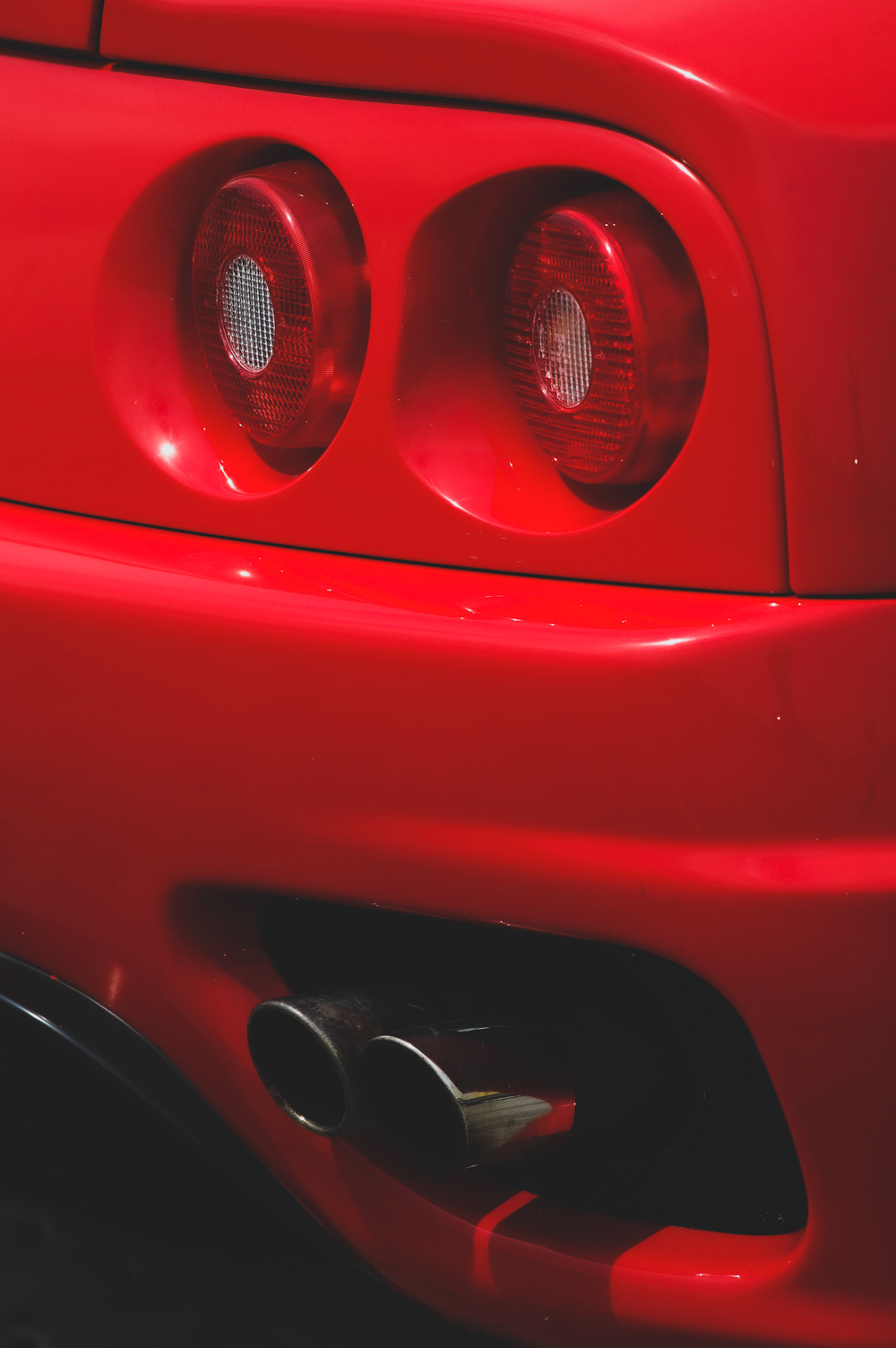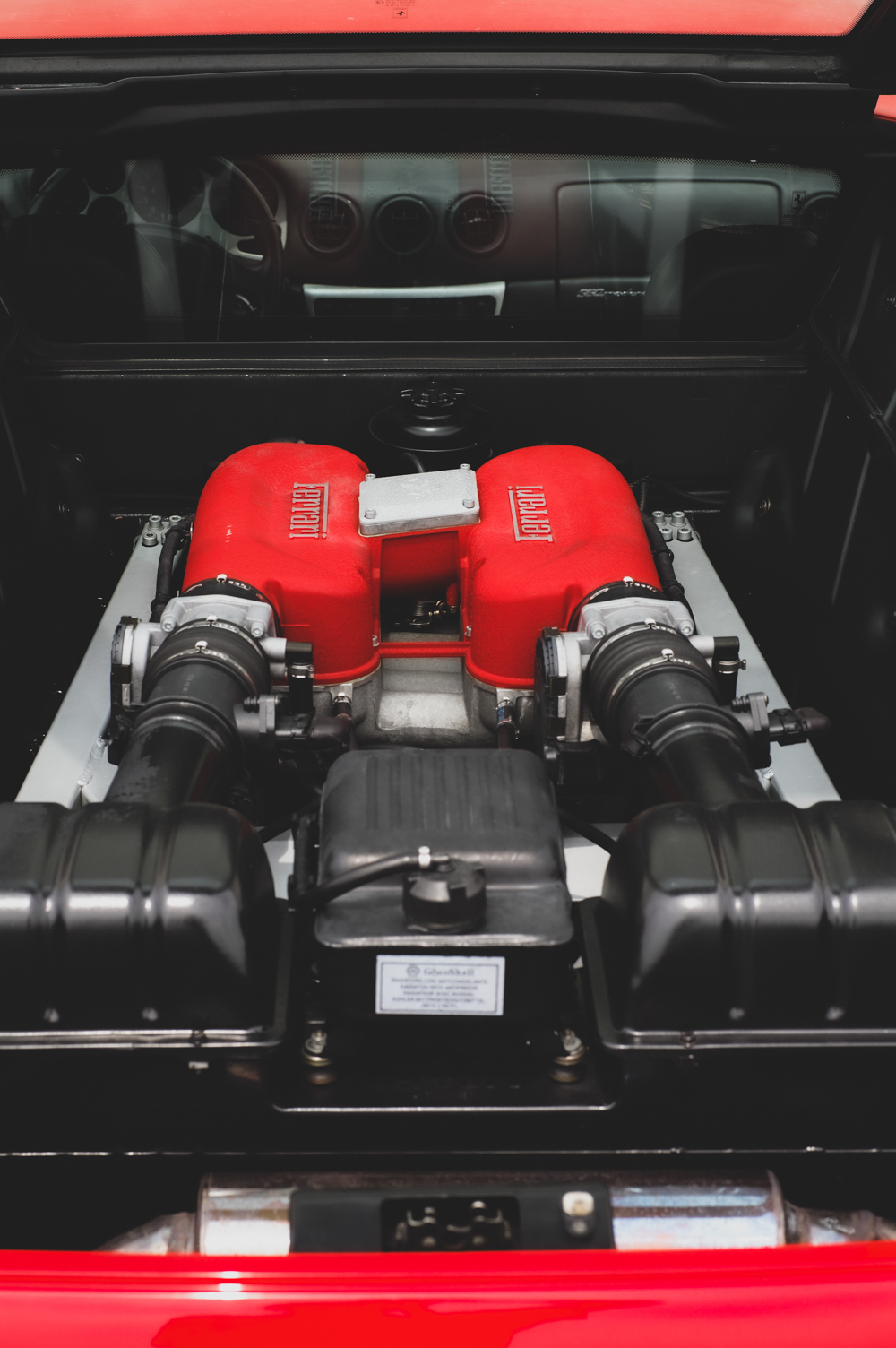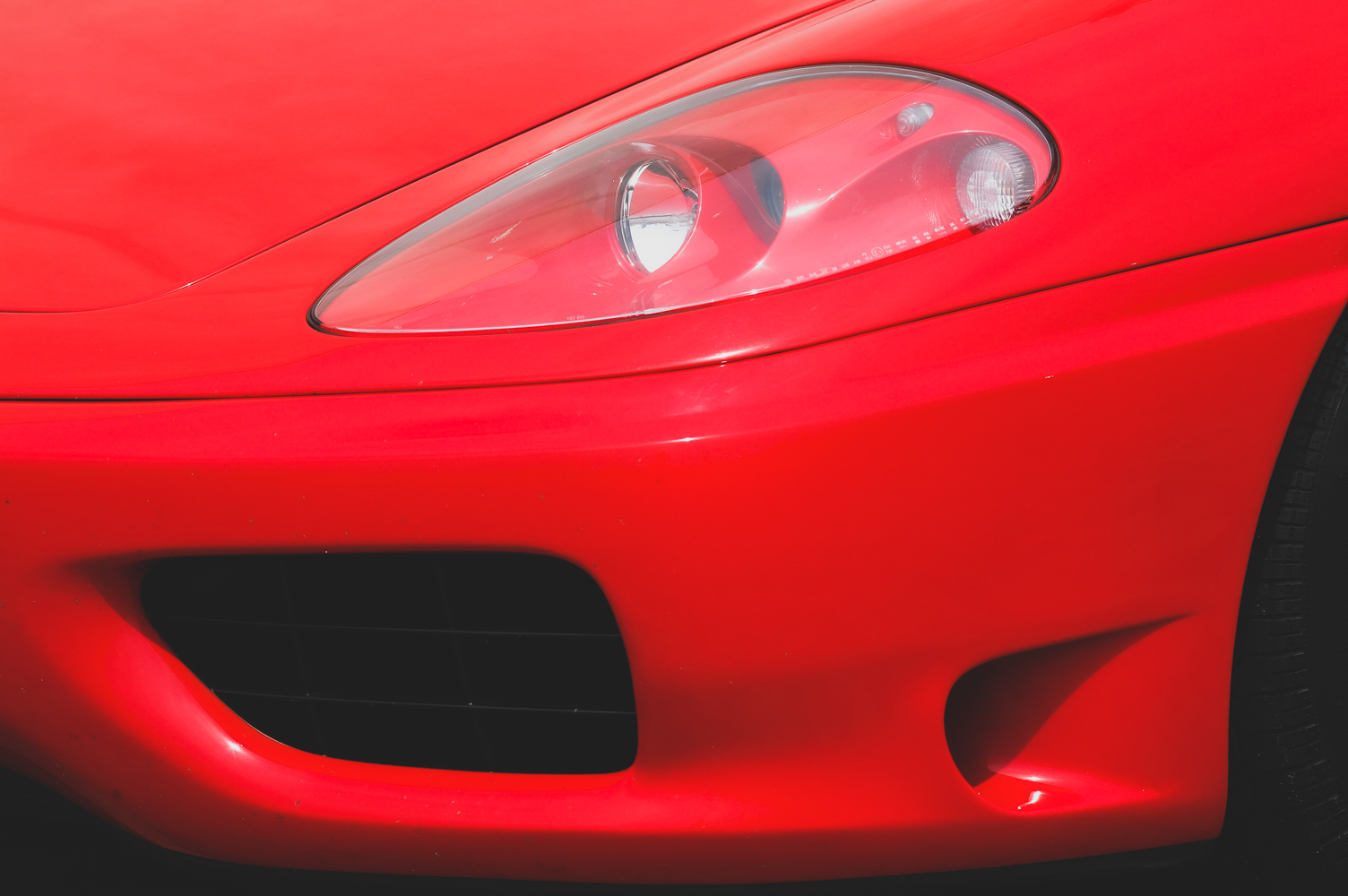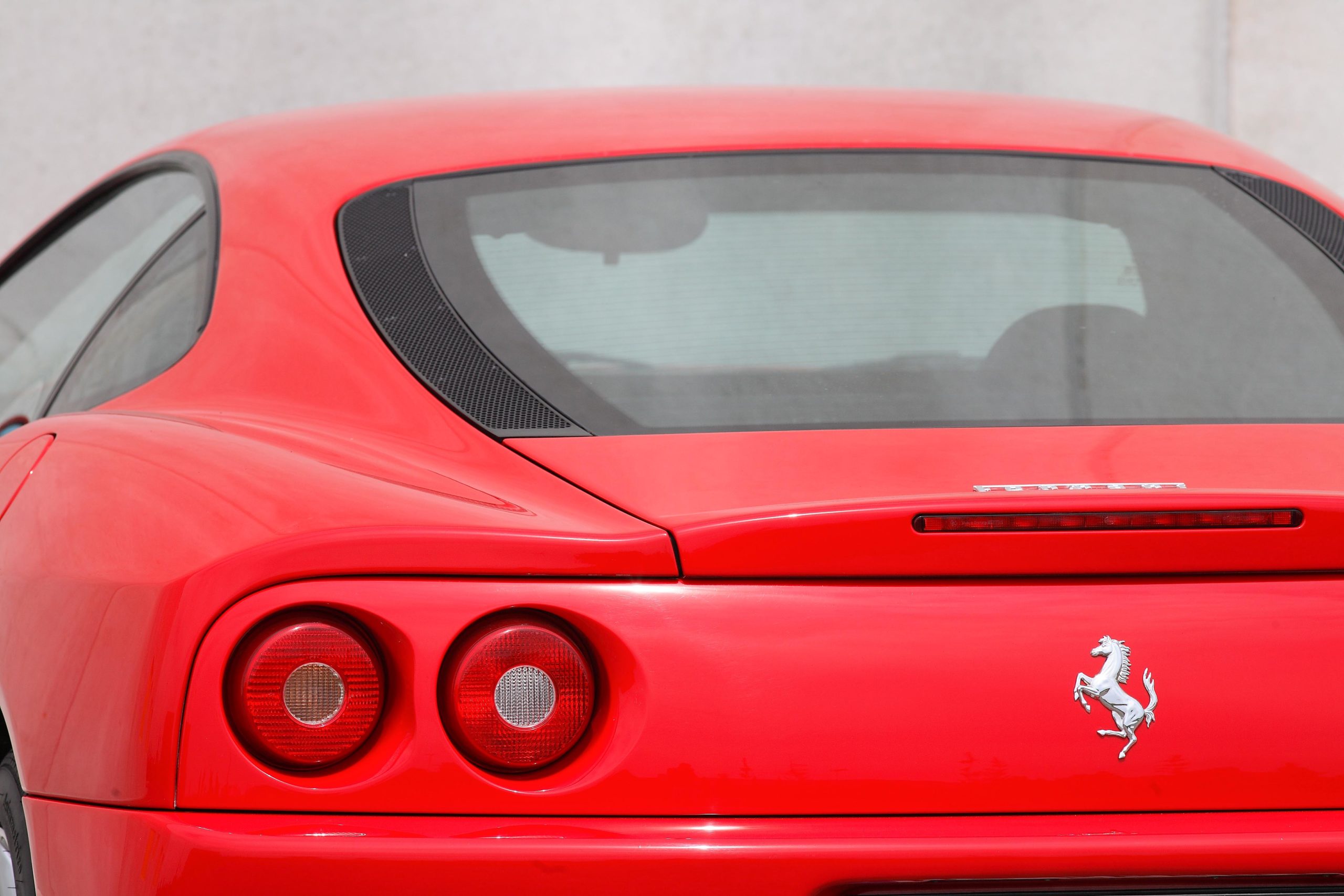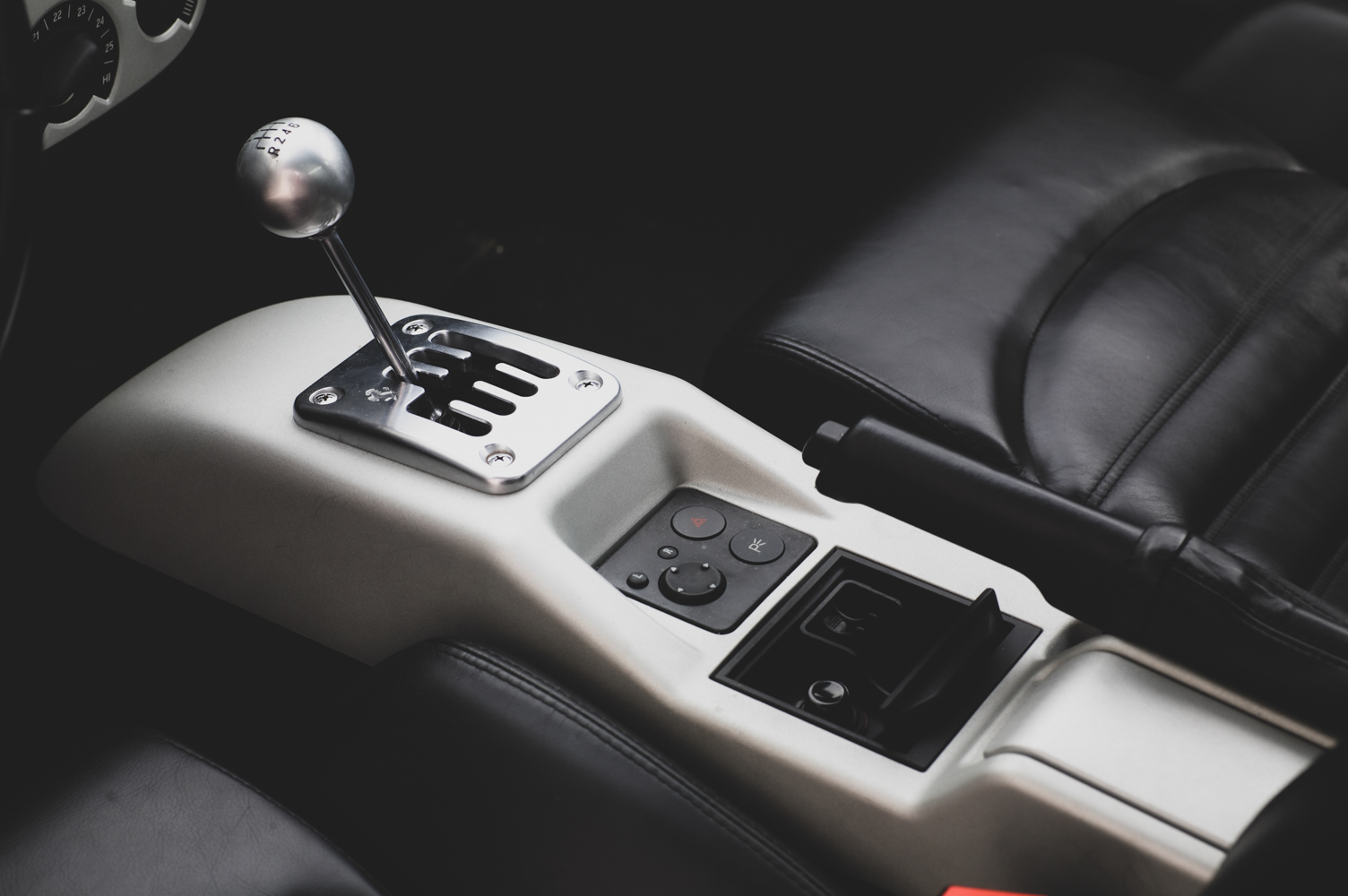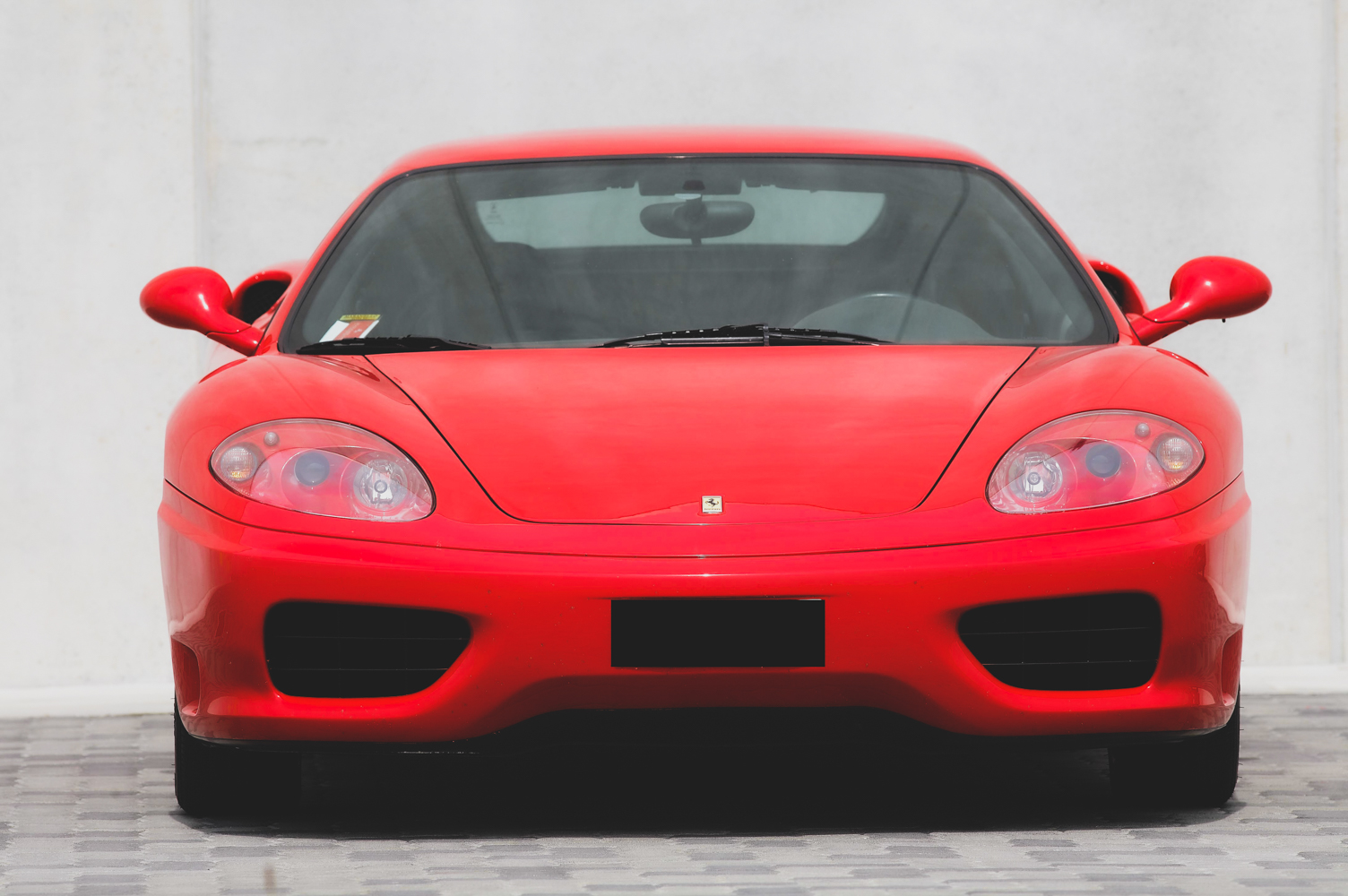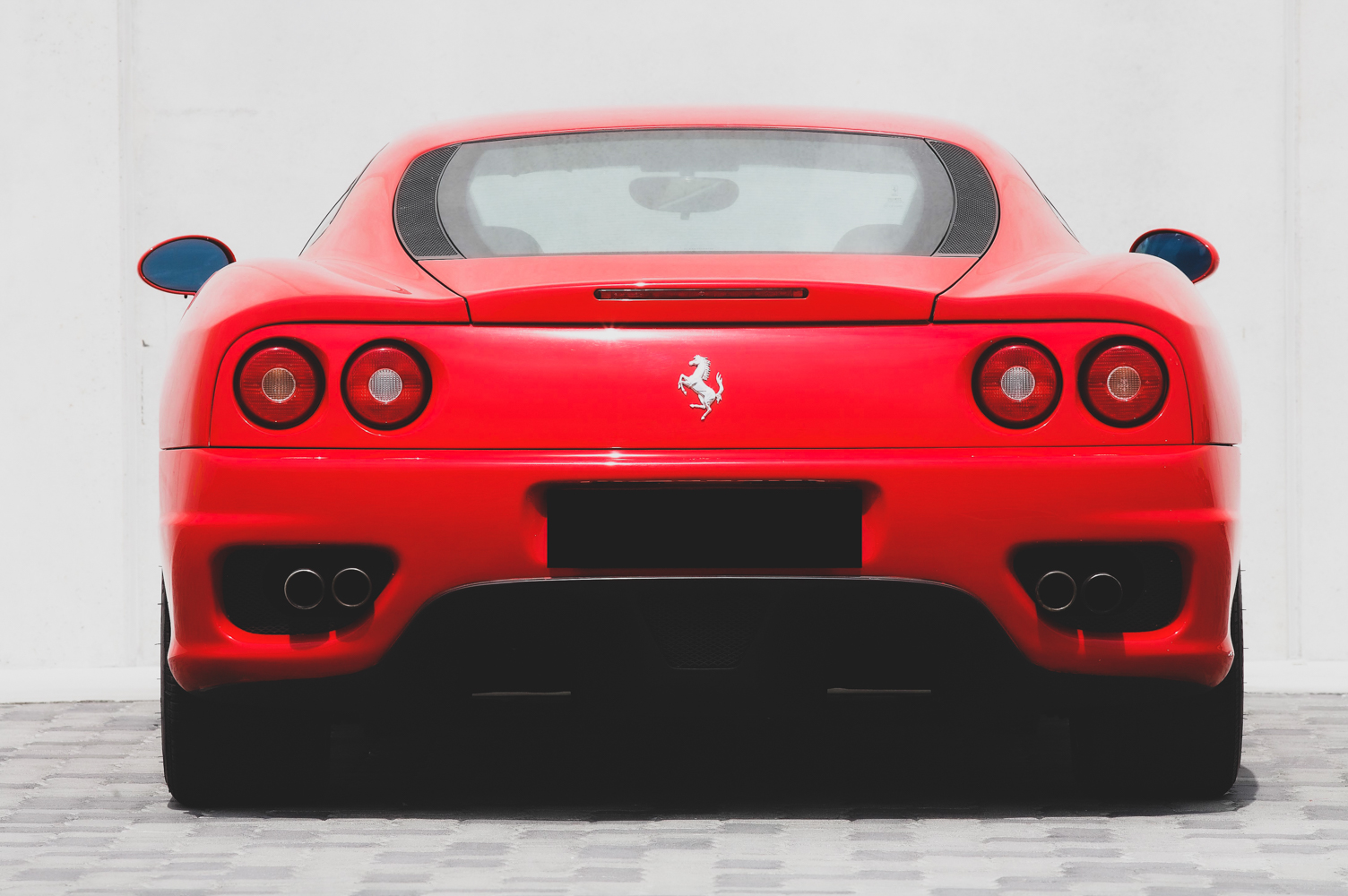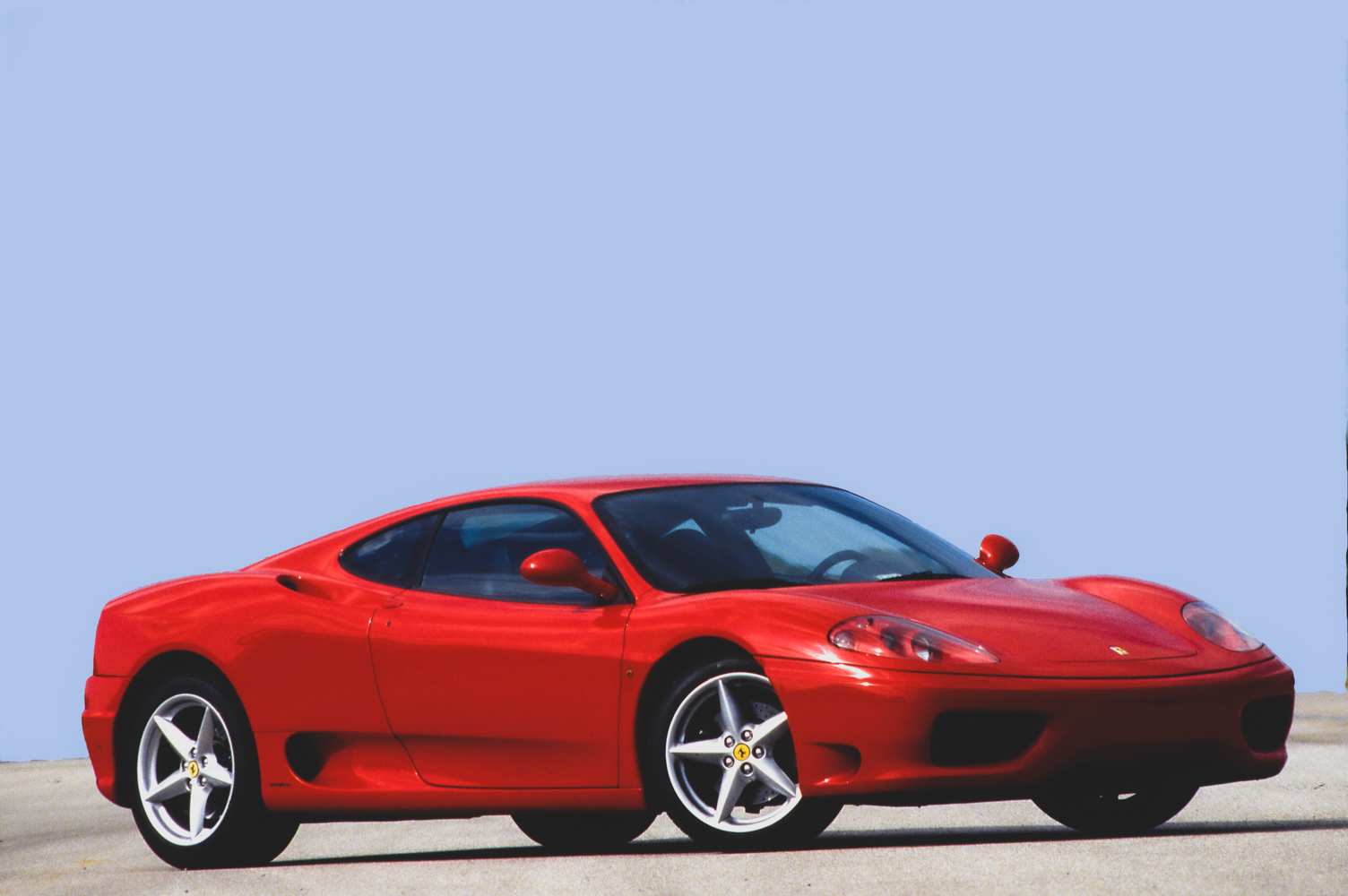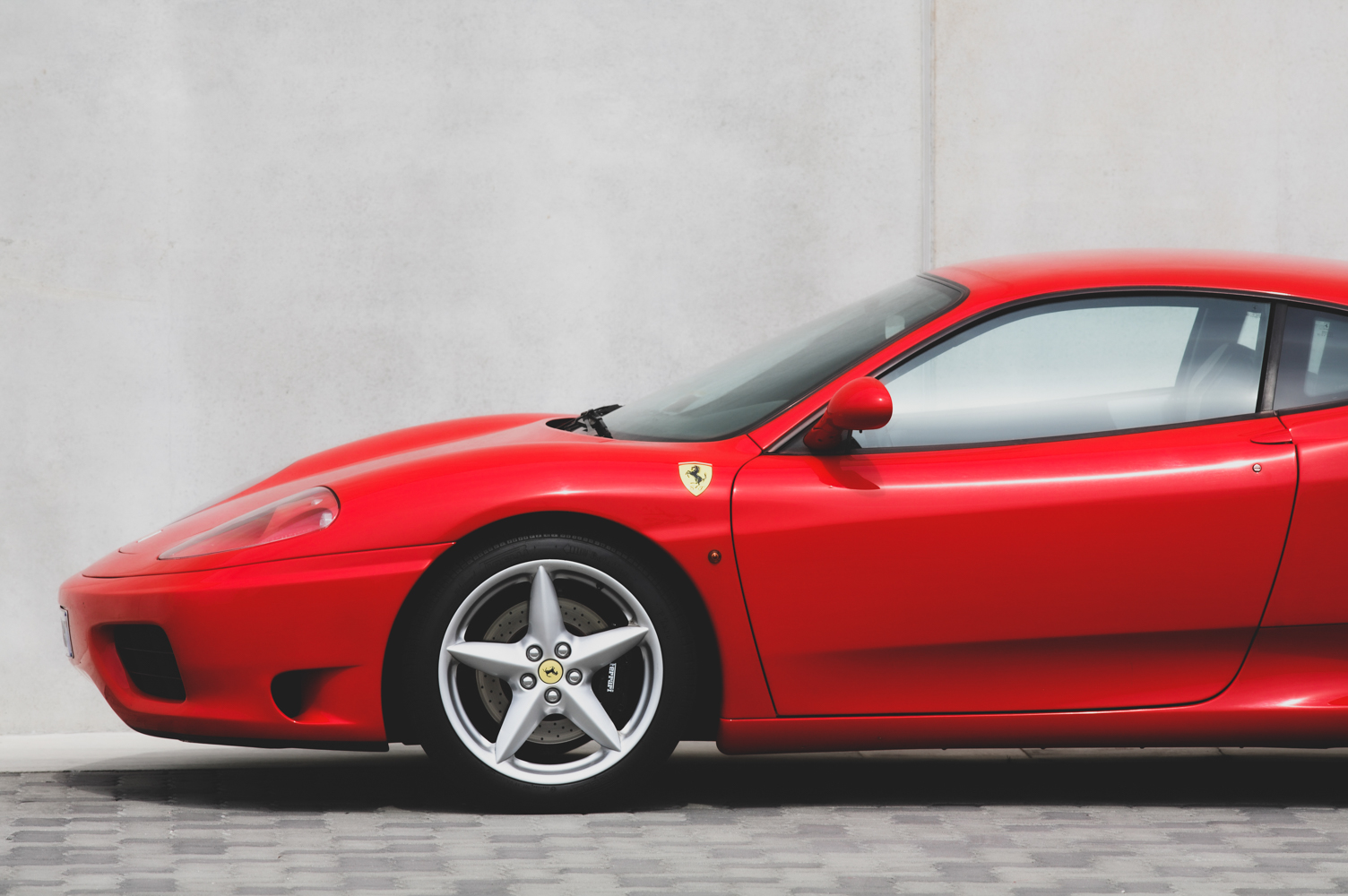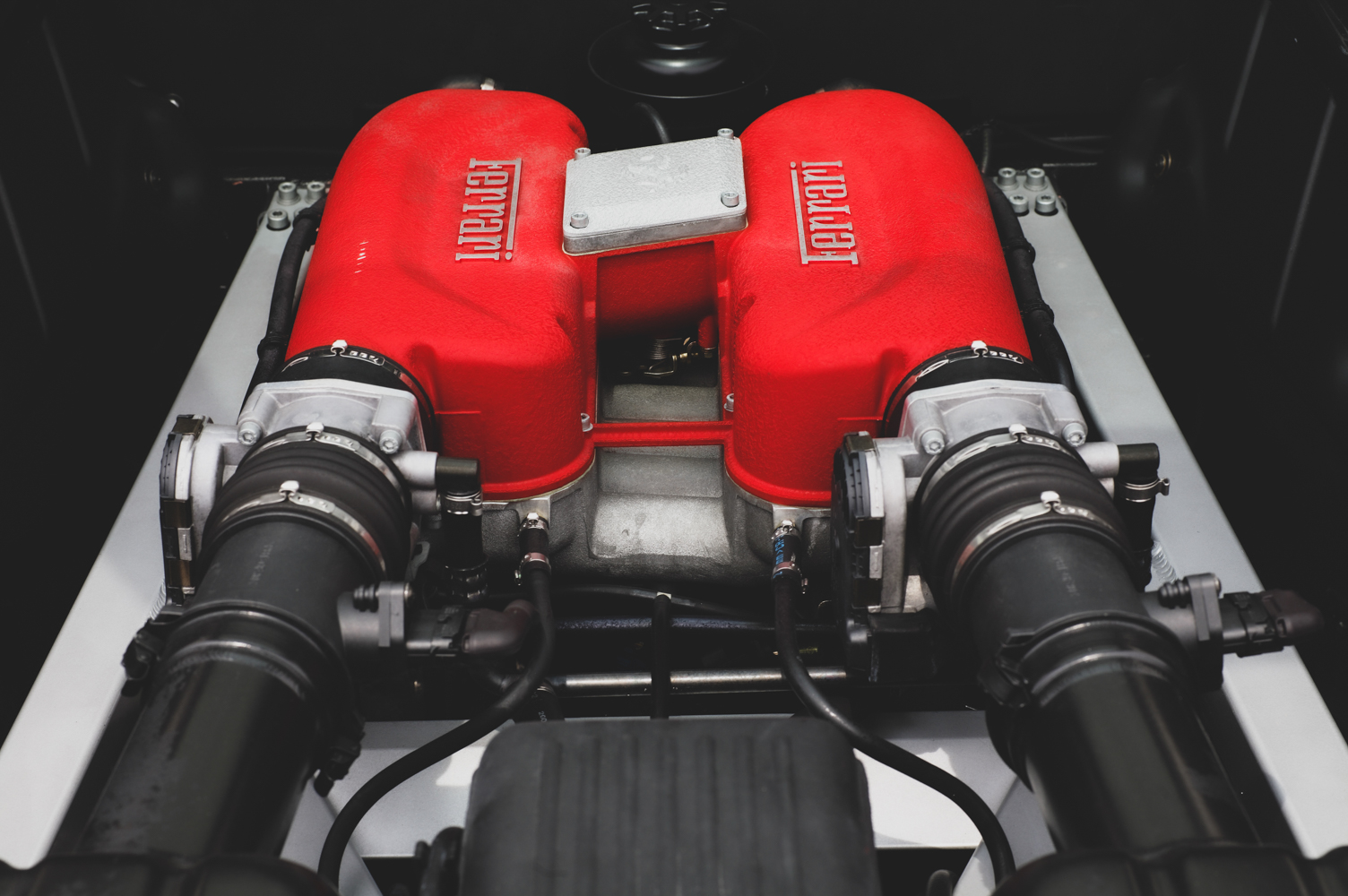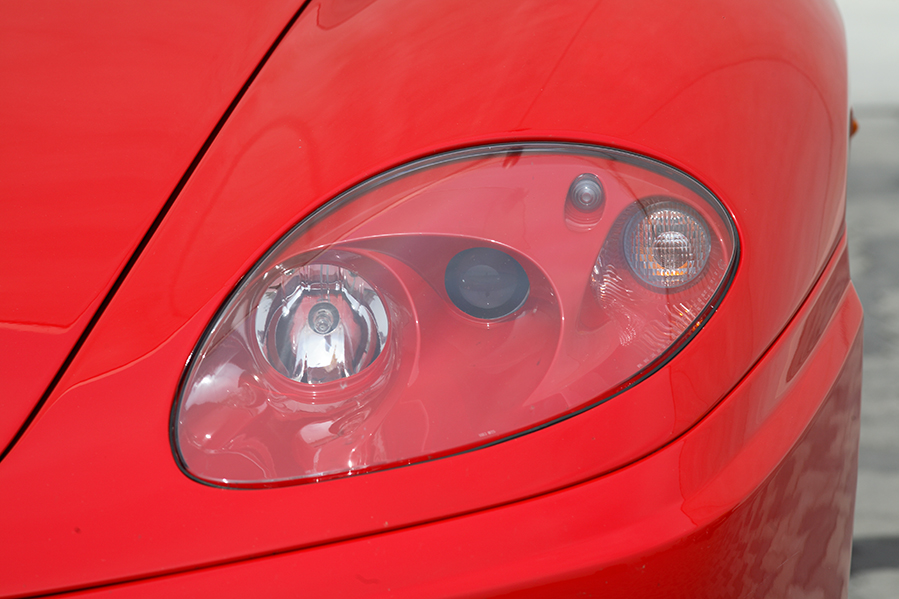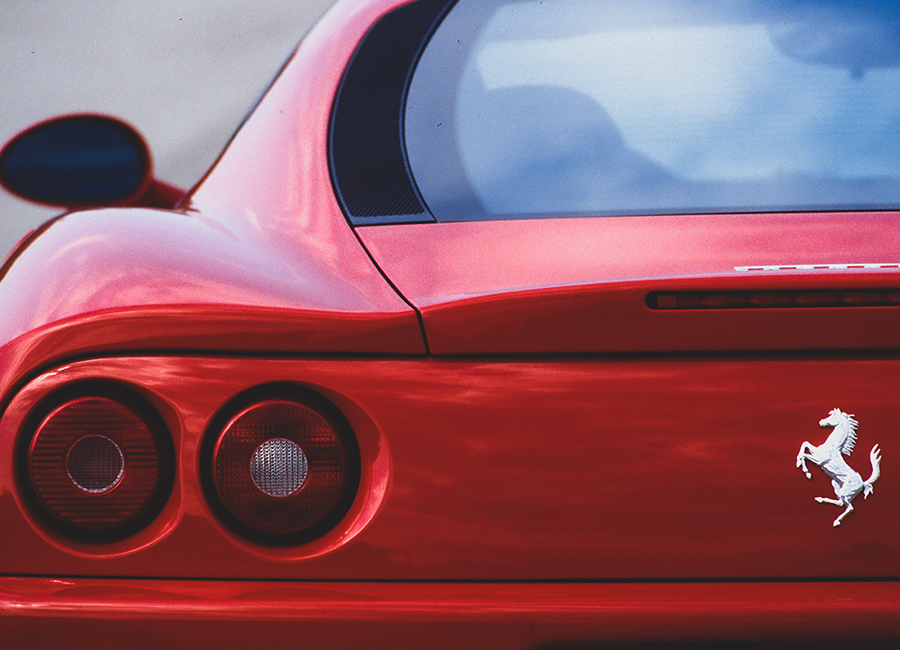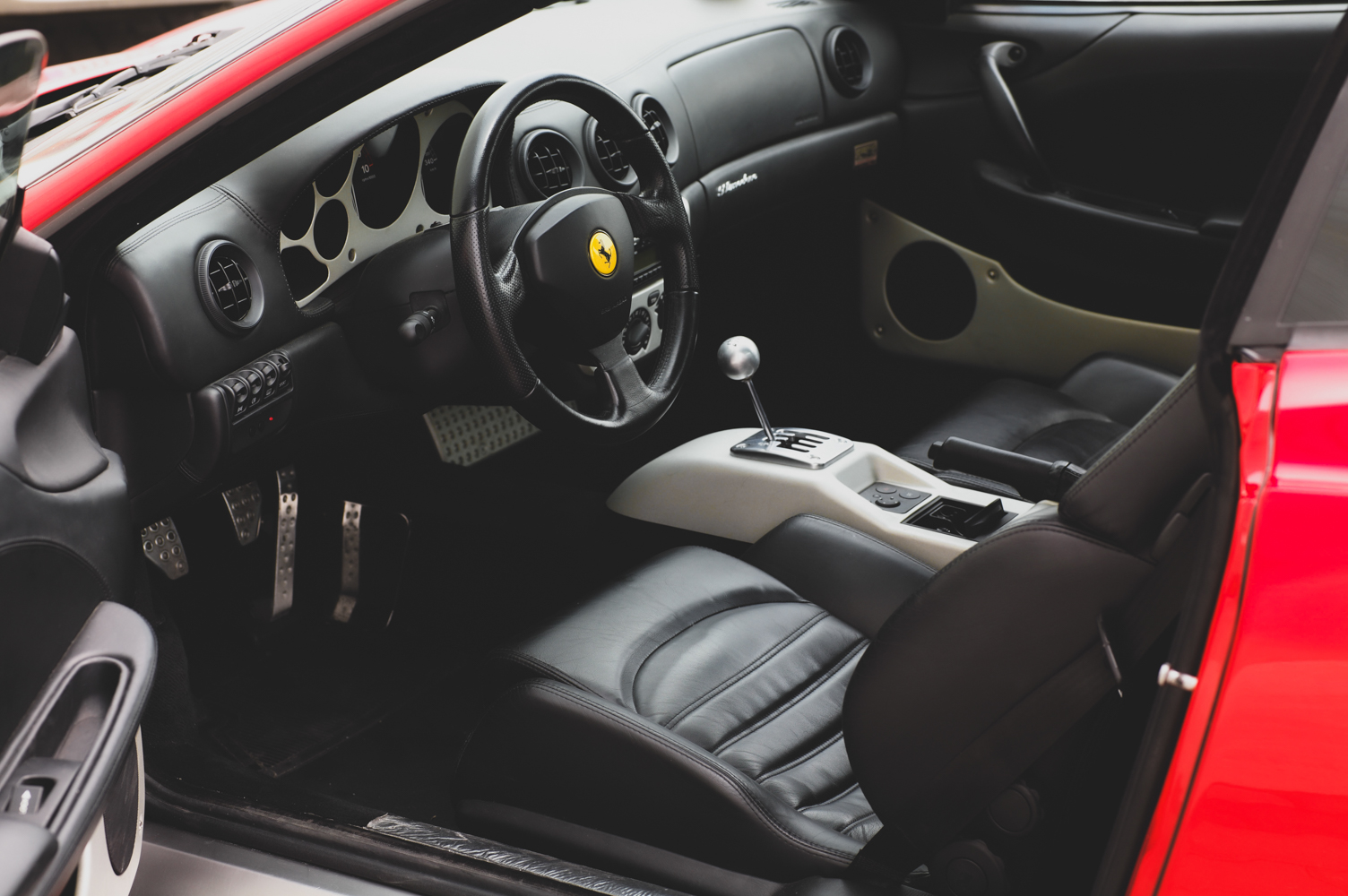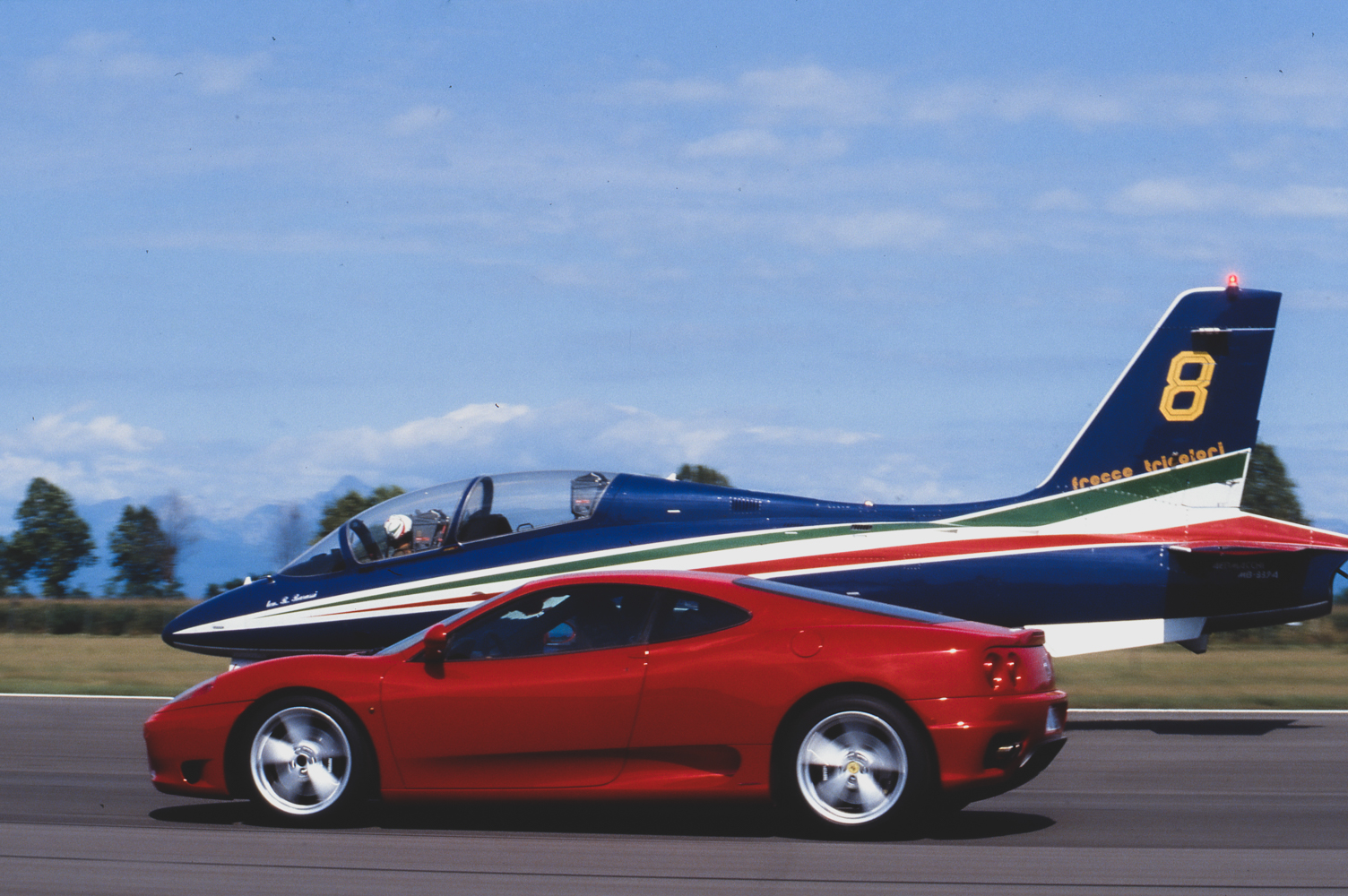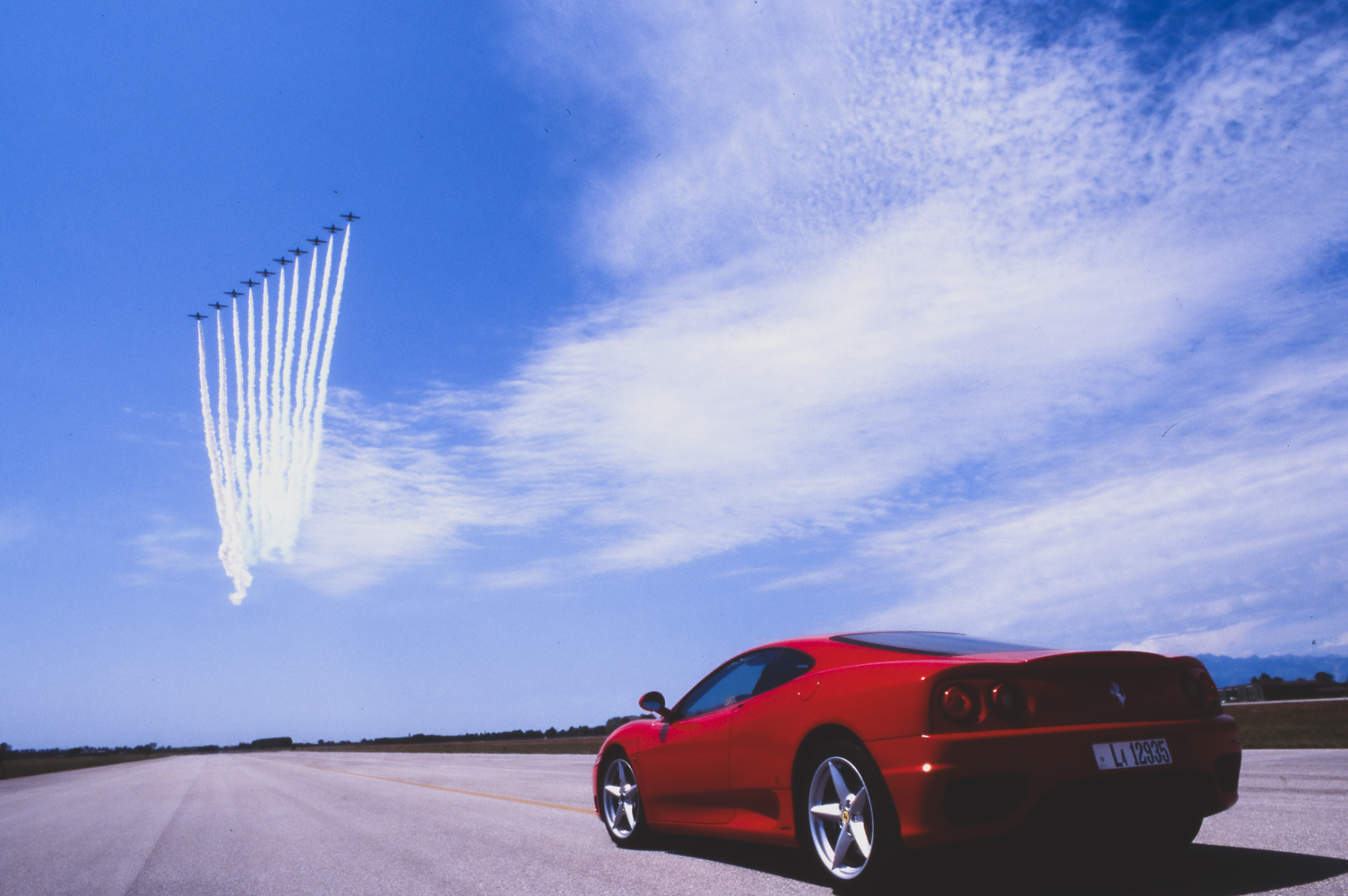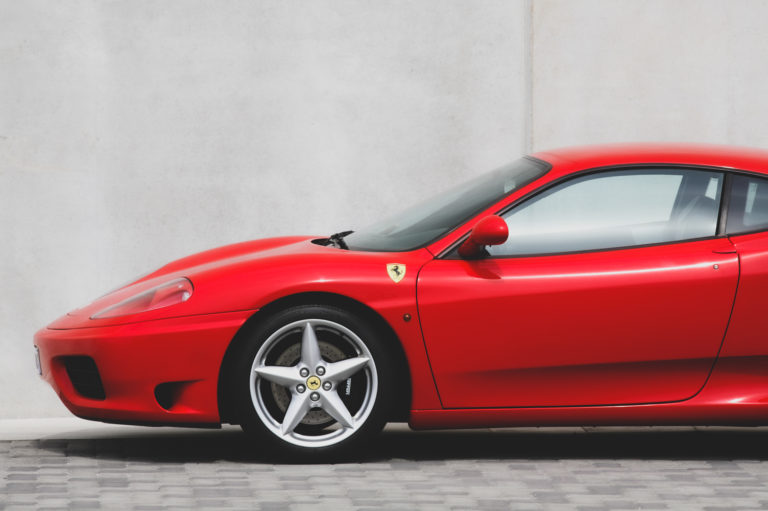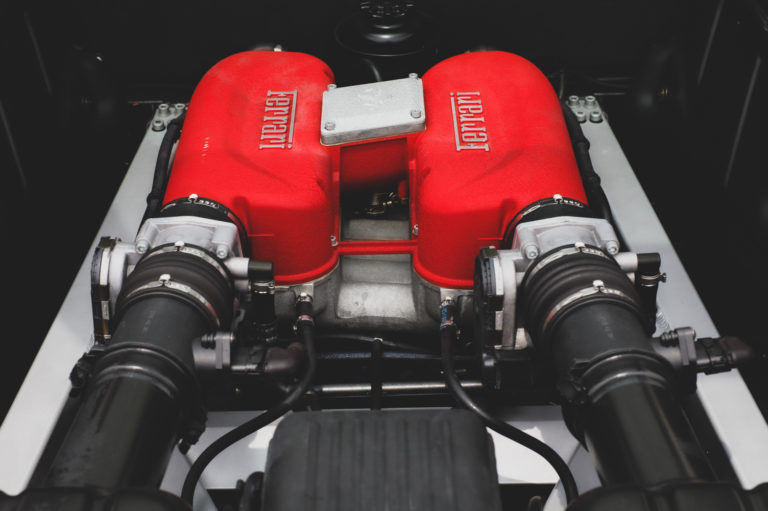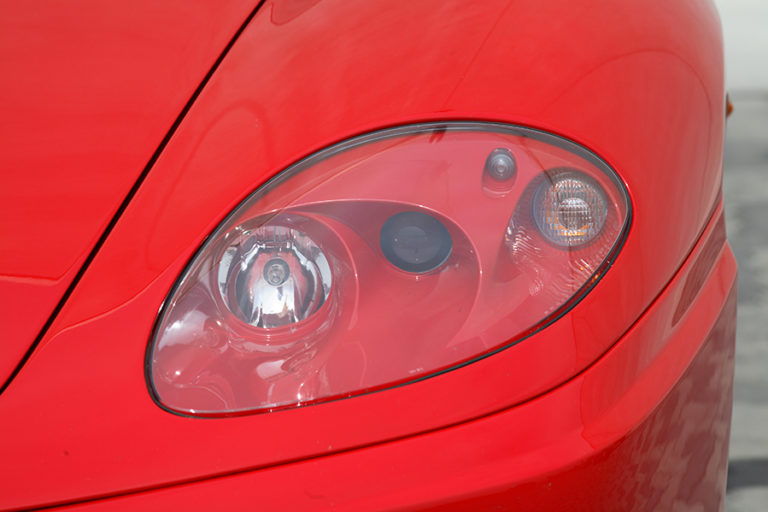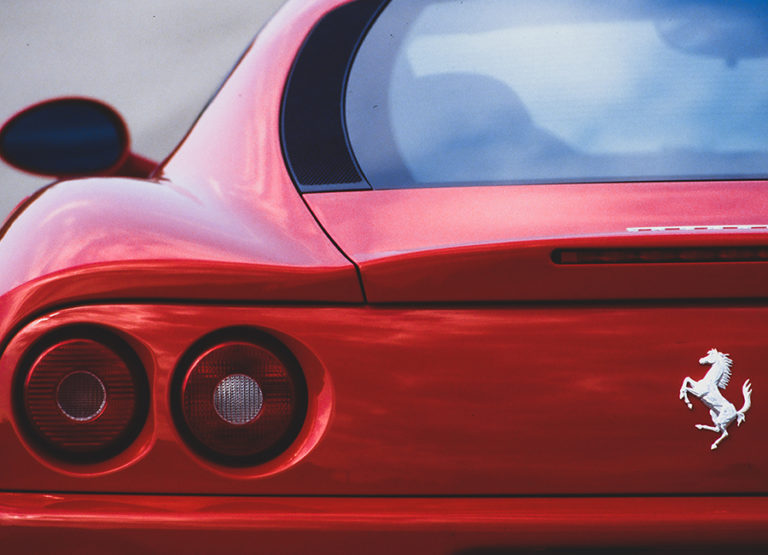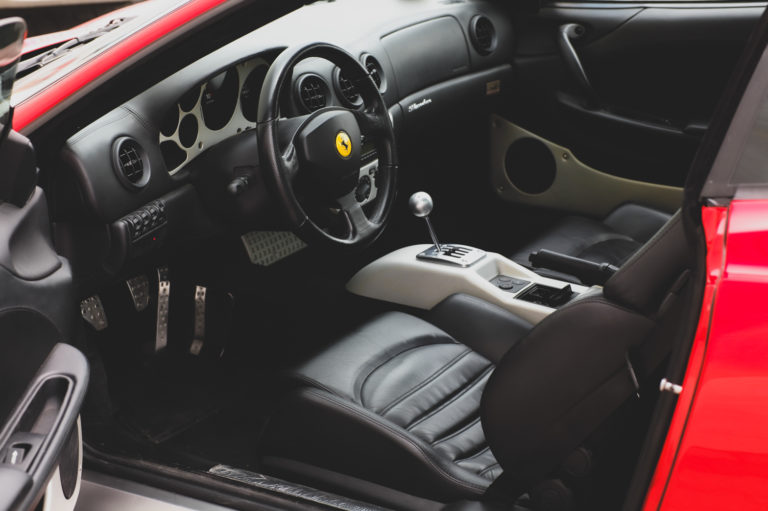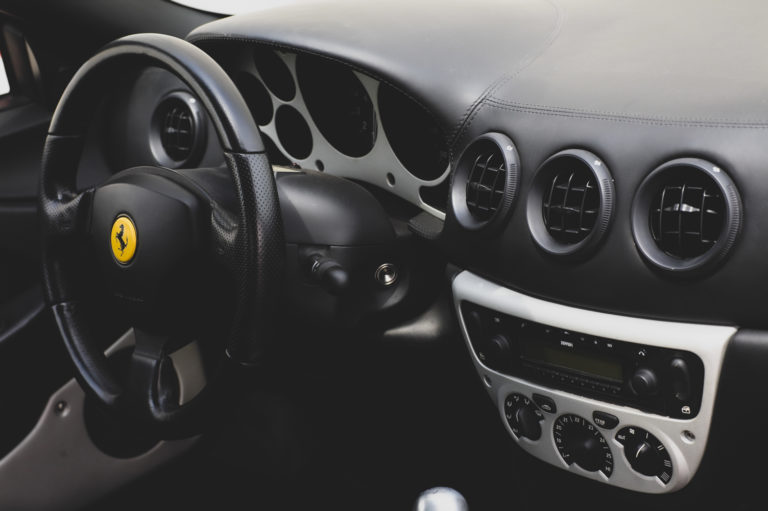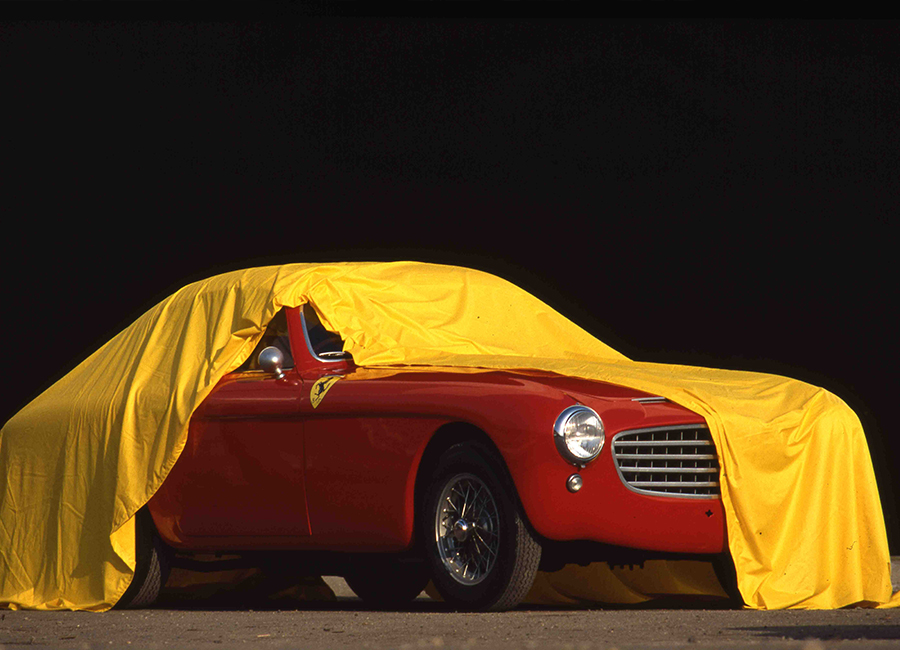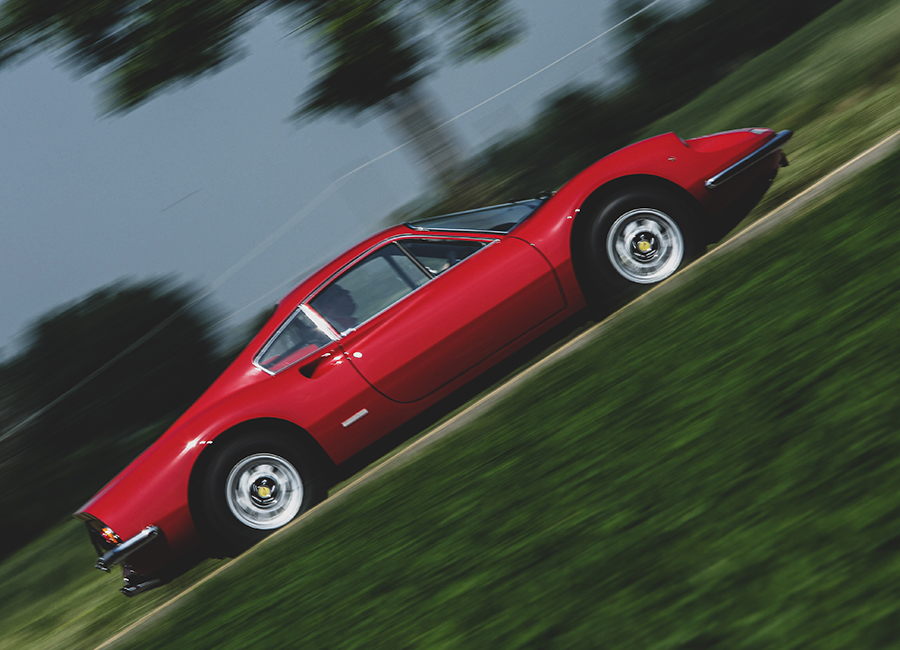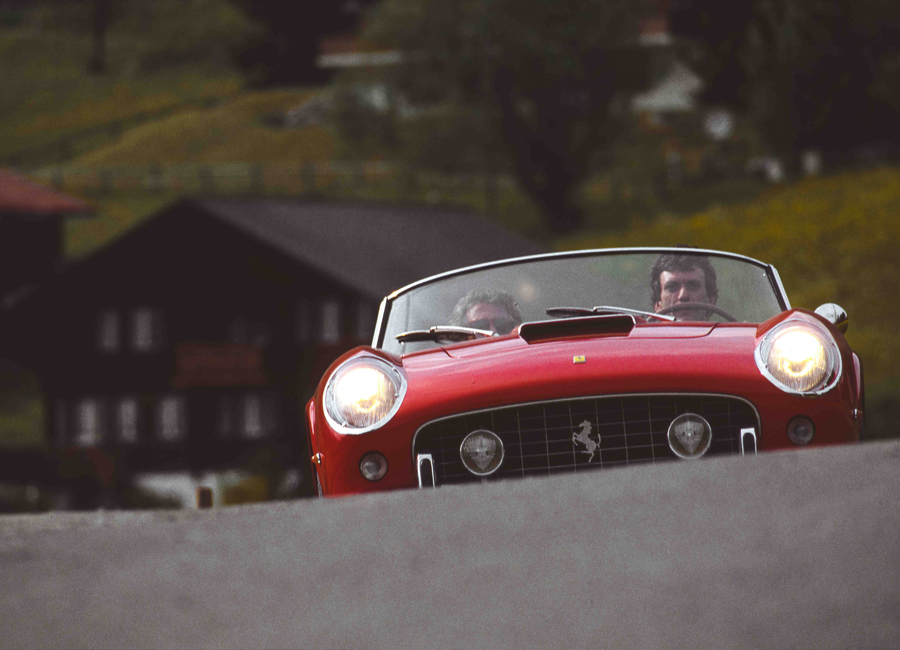THIRD MILLENNIUM EVOLUTION AND REVOLUTION
Eight cylinder – the sporty soul of Maranello brand for who love to go fast, even at the expense of the comfort. Ferrari’s car for the new millennium was a drastic departure from the previous classic Ferrari shapes, taking the company into the 21st century with a series of innovations to maintain its position as a world leader in sports-car engineering.
Rear engine configuration is the second generation of “Berlinetta” Ferrari cars, which present a different mechanical layout, choice based on the drivability and road-handling. The 360 Modena marked essential changes in the philosophy adopted for the V8 built in Maranello. The car for the new millennium (launched in 1999 and followed by a Spider version in 2000) introduced a series of innovations, both mechanical and aesthetics. A new design was studied and adopted for the front: instead of the typical central grille, two air scoops were fitted at sides to convoy air-flow under the flat bottom, increasing downforce through ground effect.
360 was the first Ferrari road-car entirely constructed in aluminum.
Thanks to an agreement signed with Alcoa (an aluminium moulding factory leader in the USA), it was feasible to adopt a weight containment policy in order to increase the performance. 360 was indeed the first Ferrari road-car entirely constructed in aluminium. Chassis, with a central support structure (monocoque), was indeed an engineering jewel, and the sinuous shapes of the body seemed to exhort the air to go through without making a stand. Pininfarina revealed two air intakes on the sides, which taken inspiration from the first rear-engine Ferrari 250 Le Mans and gave a classic touch to the original design.
The cherry on top was the solution of the engine displayed on showcase, derived from the mighty F50 and the unforgettable F40, which has a pierced plexiglass as a cover for the V8 turbocharged. The mid-mounted V8 3.6 litre fitted in the 360 Modena Berlinetta featured five valves per cylinder and a variable-geometry intake manifold, which modified the routing of the inlet air depending on rpm and engine-operating conditions. For optimum power reducing weight, the majority of the engine components were in light alloy, and the connecting roads were in titanium, manufactured by Pankl.
The attention to detail and the beauty of this Berlinetta led the then FIAT Honorary Chairman to plan a “small gift” for the Ferrari President at the time. Indeed, Luca Cordero di Montezemolo received a special wedding gift by Gianni Agnelli, who commissioned Pininfarina to create a dedicated one-off on the 360 chassis. What comes out is an aesthetic masterpiece: exclusive and beautiful Barchetta body, with a shallow and steeply raked windscreen dipping in the centre, without any support. It was finished in silver, Argento Nurburgring.
Montezemolo was a fan of the 360 Modena even before this gift, declaring it is a success all over the world, due to the balance between performance and driving pleasure. Sales numbers testify the success of this eight-cylinder, which was able to provide a unique experience, as the savage sound (strength topic) just behind the driver hears that excited spreading unbridled inside the cockpit.
360 Modena, as previous Ferrari rear V8 cars, has been developed also into racetrack version, to been employed in competitions. Indeed, the way of getting road-going Ferrari GT owners back to the racetrack, became reality in 1993, with the creation of a mono-marque championship, the Ferrari Challenge. In 2000 the 360 Challenge joined in competition the F355 Challenge to replace it the following year. Ferrari continues to bring together their V8 dream cars and clients with this program also today, racing with the 488 Challenge.
ENGINEROUTE
THIRD MILLENNIUM EVOLUTION AND REVOLUTION
Eight cylinder – the sporty soul of Maranello brand for who love to go fast, even at the expense of the comfort. Ferrari’s car for the new millennium was a drastic departure from the previous classic Ferrari shapes, taking the company into the 21st century with a series of innovations to maintain its position as a world leader in sports-car engineering.
Rear engine configuration is the second generation of “Berlinetta” Ferrari cars, which present a different mechanical layout, choice based on the drivability and road-handling. The 360 Modena marked essential changes in the philosophy adopted for the V8 built in Maranello. The car for the new millennium (launched in 1999 and followed by a Spider version in 2000) introduced a series of innovations, both mechanical and aesthetics. A new design was studied and adopted for the front: instead of the typical central grille, two air scoops were fitted at sides to convoy air-flow under the flat bottom, increasing downforce through ground effect.
360 was the first Ferrari road-car entirely constructed in aluminum.
Thanks to an agreement signed with Alcoa (an aluminium moulding factory leader in the USA), it was feasible to adopt a weight containment policy in order to increase the performance. 360 was indeed the first Ferrari road-car entirely constructed in aluminum. Chassis, with a central support structure (monocoque), was indeed an engineering jewel, and the sinuous shapes of the body seemed to exhort the air to go through without making a stand. Pininfarina revealed two air intakes on the sides, which taken inspiration from the first rear-engine Ferrari 250 Le Mans and gave a classic touch to the original design.
The cherry on top was the solution of the engine displayed on showcase, derived from the mighty F50 and the unforgettable F40, which has a pierced plexiglass as a cover for the V8 turbocharged. The mid-mounted V8 3.6 liter fitted in the 360 Modena Berlinetta featured five valves per cylinder and a variable-geometry intake manifold, which modified the routing of the inlet air depending on rpm and engine-operating conditions. For optimum power reducing weight, the majority of the engine components were in light alloy, and the connecting roads were in titanium, manufactured by Pankl.
The attention to detail and the beauty of this Berlinetta led the then FIAT Honorary Chairman to plan a “small gift” for the Ferrari President at the time. Indeed, Luca Cordero di Montezemolo received a special wedding gift by Gianni Agnelli, who commissioned Pininfarina to create a dedicated one-off on the 360 chassis. What comes out is an aesthetic masterpiece: exclusive and beautiful Barchetta body, with a shallow and steeply raked windscreen dipping in the centre, without any support. It was finished in silver, Argento Nurburgring.
Montezemolo was a fan of the 360 Modena even before this gift, declaring it is a success all over the world, due to the balance between performance and driving pleasure. Sales numbers testify the success of this eight-cylinder, which was able to provide a unique experience, as the savage sound (strength topic) just behind the driver hears that excited spreading unbridled inside the cockpit.
360 Modena, as previous Ferrari rear V8 cars, has been developed also into racetrack version, to been employed in competitions. Indeed, the way of getting road-going Ferrari GT owners back to the racetrack, became reality in 1993, with the creation of a mono-marque championship, the Ferrari Challenge. In 2000 the 360 Challenge joined in competition the F355 Challenge to replace it the following year. Ferrari continues to bring together their V8 dream cars and clients with this program also today, racing with the 488 Challenge.
ENGINEROUTE


